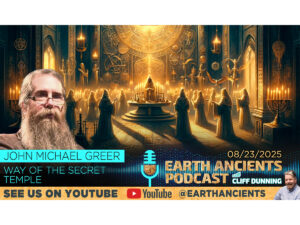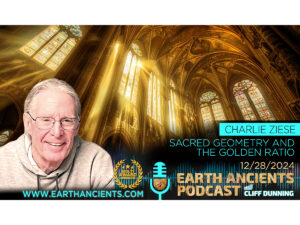Robert Temple: Lost Technology of the Ancient World
Lying unnoticed in many museums around the world are large numbers of ancient artefacts fashioned out of rock crystal or glass; lenticular in shape, they are habitually described by archaeologists and cataloguers as decorative in purpose; in short, as costume jewellery. To Robert Temple, however, who bolsters his classical and linguistic erudition with expertise in the field of optics, they are obviously and self-evidently lenses. As such, they form the starting point for The Crystal Sun, his wide-ranging and provocative investigation into the existence of an ancient science of optics. There is much to amaze here, not least the sheer volume of evidence that Temple is able to amass (and the seemingly even greater volume to which, for various tiresome reasons, he was unable to gain access). It is this density of proof, and the hardness of the science involved, that tend to dispel suspicions that we are entering Jesus-was-an-astronaut territory.The narrative of Temple’s discoveries is cast almost as an intellectual detective novel. (A characteristic recurring motif is his exasperation with the small-mindedness and intellectual prejudice endemic in the archaeological profession.) From the physical lenses we move to the scattered descriptions of lenses, telescopes and their use by the Greeks and Romans, the destructive use of burning-mirrors by Archimedes at the siege of Syracuse, and the true role of Prometheus, who brought fire to man from heaven. A review of ancient optical theory takes the argument deep into esoteric realms of Gnostic and alchemical thought. Stonehenge as astronomical instrument is discussed–including the startling proposal that the great circle was originally roofed with a dome. Inevitably, perhaps, the argument eventually makes its way to Egypt, real or imaginary home of all mysteries. Here, in the long final section of the book entitled “The Eye of Horus”, Temple excels himself. The scale and precision of Egyptian monuments require sophisticated surveying techniques and a supporting mathematics. Temple finds these hidden in myths, partially disguised in tomb paintings embodied in the very structure of the buildings themselves. Above all, it seems, the Egyptians used light and shadow with great virtuosity. The Pyramids themselves, once clad in smooth, reflective white marble, and casting precise shadows across each other, are characterised as mystical surveying instruments on the hugest possible scale.Temple is an engagingly garrulous and eccentric narrator, constantly interrupting himself, leaping forwards and back, starting hares he cannot pursue, pausing for personal paranormal reminiscences, but his passion and erudition are never in doubt. And is it true? Few readers can be in a position to decide. Reserve judgement, then, and enjoy an exhilarating intellectual adventure. –Robin Davidson
Professor ROBERT TEMPLE is the author of a number of incisive and provocative books including the international bestseller, The Sirius Mystery. His books have been translated into a total of 44 foreign languages. Temple is Visiting Professor of the History and Pilosophy of Science at Tsinghua University in Beijing. For many years he was a science writer for the Sunday Times, the Guardian, and a science reporter for Time-Life, as well as a frequent reviewer for nature and profile writer for The New Scientist.










